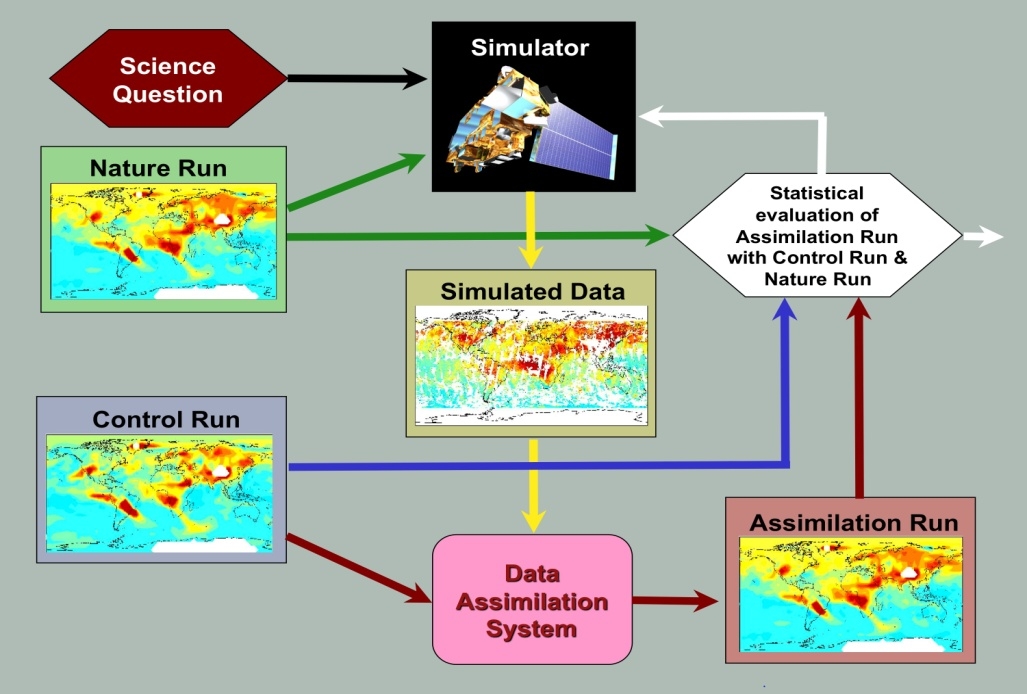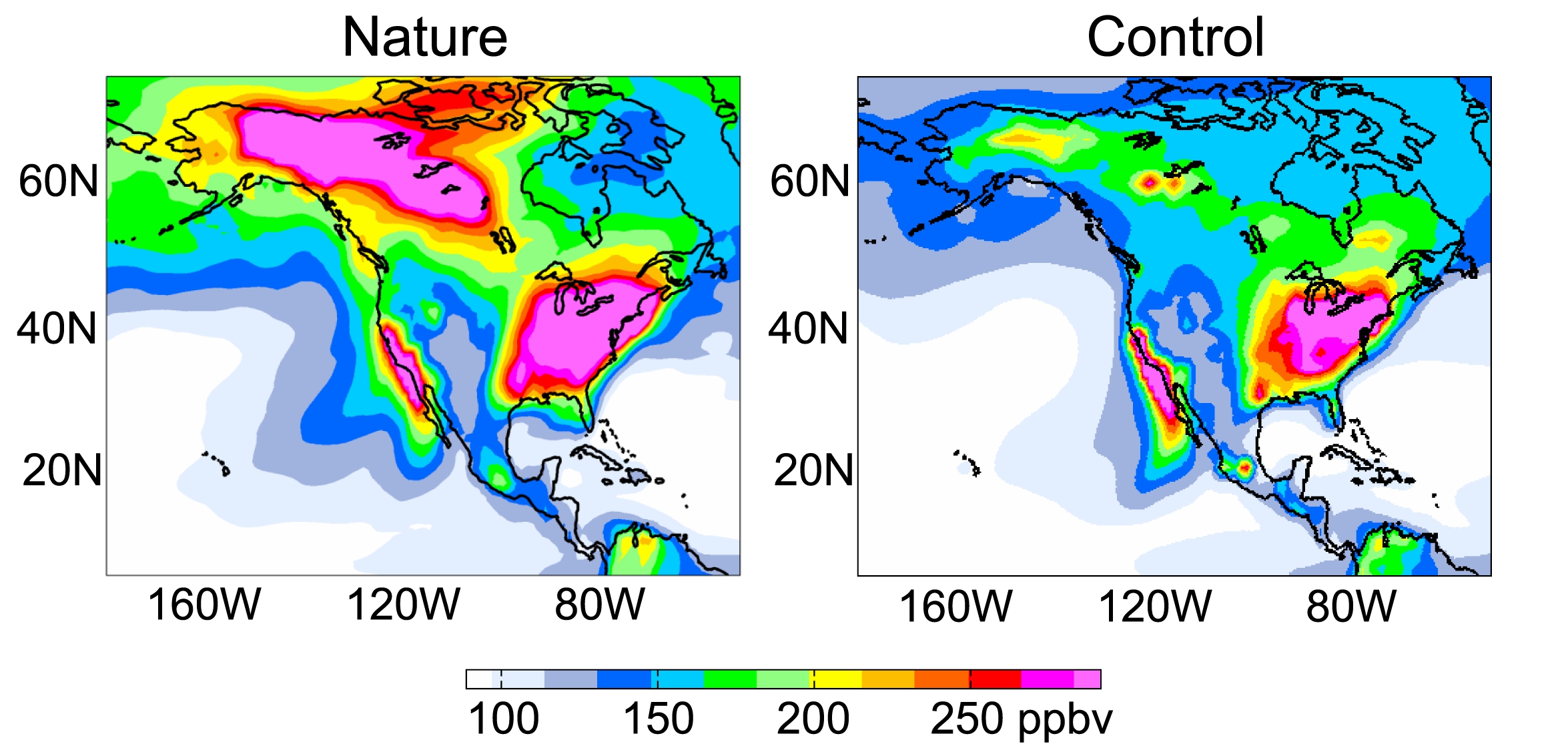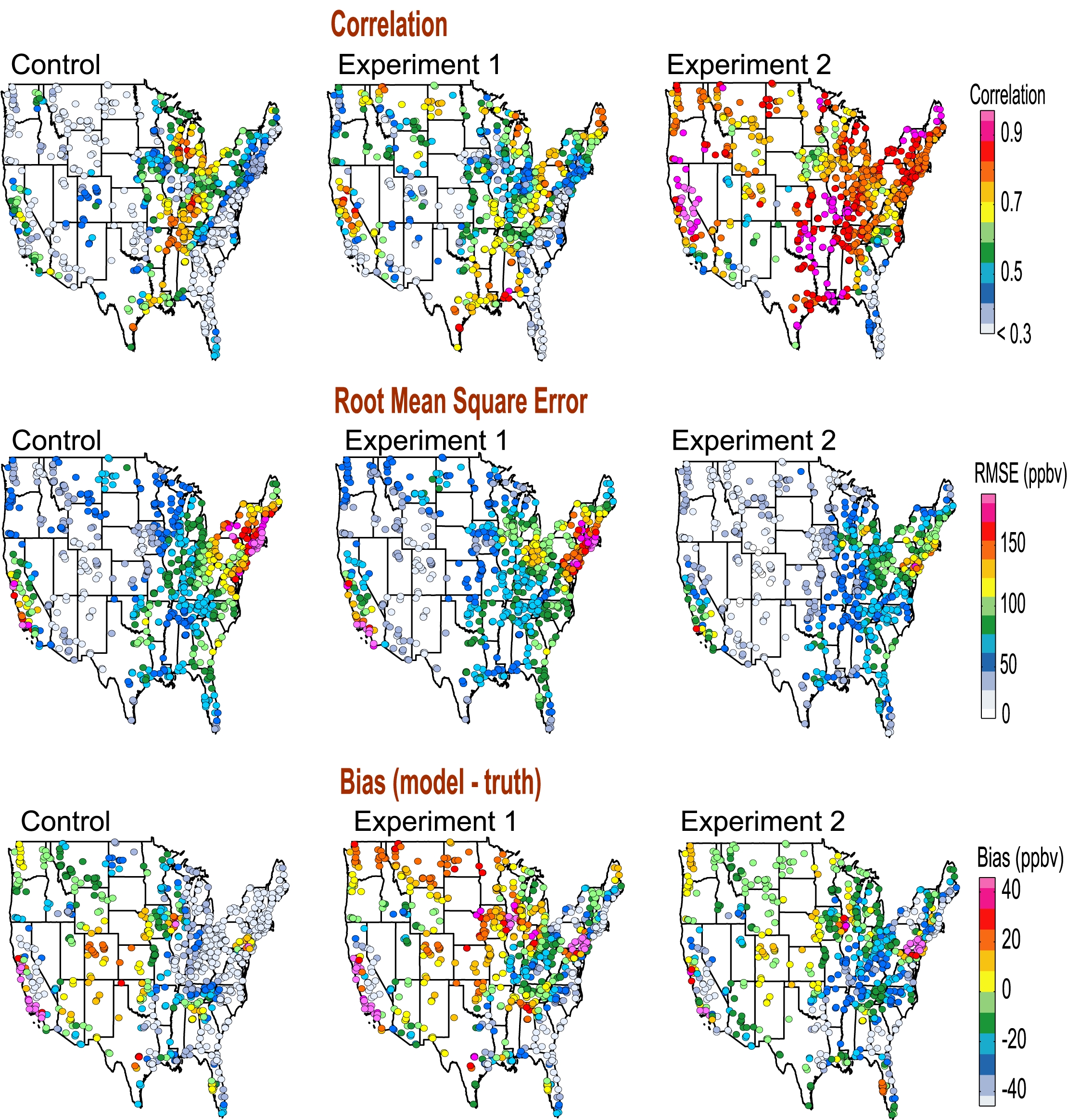Chemical OSSEs
If a satellite mission related to atmospheric composition and air quality is to become a reality within the next decade, the atmospheric chemistry community will need to establish clear scientific motivation for the new measurements. In this study, we demonstrate the feasibility of using chemical observing system simulation experiment (OSSE) studies to help define quantitative measurement requirements for satellite missions and to evaluate the expected performance of proposed observing strategies (Figure 1). The goal of these experiments is to provide an objective way of defining a traceability matrix that maps science requirements through measurement requirements onto instrument requirements.

Figure 1:
The chemical OSSE framework comprises the following key elements: (1) a quantifiable science-driven requirement for a chemical species observation; (2) a satellite instrument simulator and observing strategy that can be tested for producing a useful measurement; (3) a simulated retrieval of the species with ‘nature’ defined by an appropriate chemical transport model; (4) a forecast of the species distribution using an assimilation of the retrieval in the model; and (5) a quantitative assessment of the value of the measurement.
We have formulated and implemented the chemical OSSE framework through an OSSE study for carbon monoxide (CO) in the lowermost troposphere (see Figures 2 and 3). This is motivated by the requirement of measuring the distribution and time evolution of CO in the lowermost troposphere for air quality applications using candidate geostationary satellite (GEO) multispectral measurements in the thermal (TIR) and near infrared (NIR). In particular, a gas correlation filter radiometer (GCFR) instrument of this type, specifically designed for GEO deployment, has been proposed as a candidate technology for NASA Geostationary Coastal and Air Pollution Events (GEO-CAPE) mission. This type of instrument is currently under development as part of the NASA Instrument Incubator Program (IIP). Our OSSE study was specifically developed to quantify the improvements in the model forecast/analysis of surface CO concentration over continental US with the addition of a multispectral NIR+TIR GCFR in GEO (i.e. CISR-like), compared to a TIR GCFR in low earth orbit or LEO alone (i.e. MOPITT-like).

Figure 2:
Mean surface CO distribution derived from CAM-Chem/DART model simulations for July 2004 test case (units in ppbv). The CO distribution from the Nature Run (NR) was used as the true CO in this study. Emissions for the Control and Assimilation runs were significantly different from NR.

Figure 3:
Statistical evaluation of surface CO model forecasts/analyses with respect to CO derived from the NR sampled across randomly selected US EPA air quality sites. Experiment 1 is an Assimilation Run (AR) using MOPITT-like simulated CO observations while Experiment 2 assimilated both MOPITT-like and GEO CISR-like CO observations.
Reference:
Edwards, D., Arellano, A. and M. Deeter, (2008), A satellite observation system simulation experiment for carbon monoxide in the lowermost troposphere, J. Geophys. Res., submitted.
